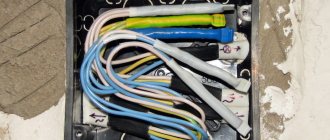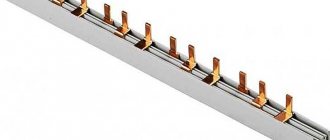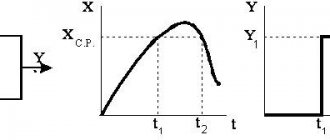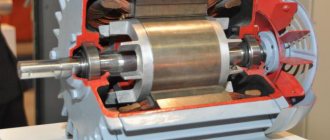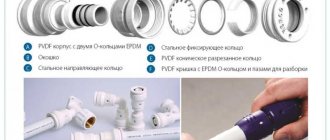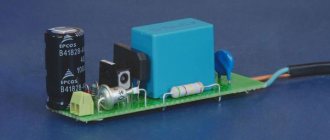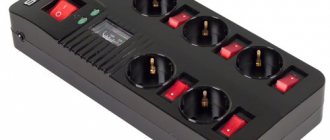Scientific and technological progress in all spheres of human activity increasingly requires backup sources of electrical energy. Modern batteries are difficult to maintain and limited in the amount of electrical charge. A supercapacitor (ionistor) is a powerful energy storage device that will replace traditional batteries in the future.
Supercapacitors
Concept
Large capacitors accumulate electrical charge due to a double electrical layer. An electrical double layer (EDL) allows the energy potential to be stored several orders of magnitude higher than that of a conventional capacitor.
DES is a layer between plates of ions that covers the surface of particles at the phase boundary. The charge of one layer of ions is compensated by the potential of the second layer of counterions. The thickness of the DES is negligible, while at the same time the area of the porous linings is huge.
The ionistor uses DES between carbon and electrolyte. The electrode is solid activated carbon, and the electrolyte is in liquid form. When these two media are in close contact, the positive and negative poles have a very narrow gap between them. When exposed to an electric field, a double electric layer is formed on the surface of the electrolyte adjacent to the coal.
Ionistor with double electrical layer
The use of a double electrical layer instead of a dielectric makes it possible to unlimitedly increase the electrode surface. As a result, a small supercapacitor can have a capacity of several farads at voltages from 2 to 10 volts.
Important! Improvement of the ionistor will lead to the fact that in most cases they will use a supercapacitor instead of a battery.
New to the electric vehicle market
When Lamborghini launches a hybrid, you can be sure it won't just be a more powerful version of the Toyota Prius.
The Sian, the Italian company's debut in the field of electrification, is the first production hybrid car (as many as 63 examples) to use supercapacitors instead of lithium-ion batteries.
Many physicists and engineers believe that they, and not lithium-ion batteries, hold the key to mass electric mobility. Sian uses these to store electricity and feed it to its small electric motor when needed.
The history of the supercapacitor
Ionistor - what is it and where is it used?
In 1957, the American company General Electric patented a capacitor with a double electrical layer and porous carbon electrodes. The concept of the patent was that the accumulation of electrical potential occurred in the pores of carbon.
However, already in 1966, a company from Ohio, SOHIO, received a patent for an ionistor that accumulates charge in a double electrical layer. In 1971, NEC, which acquired the patent from SOHIO, began producing products called the Supercapacitor.
In 1978, Japanese radio manufacturer Panasonic flooded the market with supercapacitors called the Gold capacitor. In the same year, the first supercapacitors with a capacity from 0.1 to 50 farads were developed and manufactured in the USSR.
Supercapacitors: operating principle and selection algorithm
Increasingly, supercapacitors can be found in modern electronic devices. Supercapacitors can act both as main batteries and as buffer elements to smooth out battery voltage dips when working with a pulsed load.
Along with the term “supercapacitor”, alternative names are often used in the literature, for example, “ultracapacitor” or “ionistor”. All of these names are used to refer to the same component - a double-layer capacitor. The supercapacitor was first created back in 1957 by General Electric. Later, similar components were produced by various manufacturers around the world, including in the USSR (for example, KI1-1 ionistors).
Operating principle of a supercapacitor
The structure and operating principle of a supercapacitor are explained in Fig. 1. A supercapacitor consists of electrodes, a graphite separator and an electrolyte. When an external voltage is applied, charge carriers form two electronic layers at the interface between the separator and the electrolyte. The larger the surface area of the separator, the greater the accumulated charge will be. The figure shows that, unlike batteries, there are no chemical reactions in a supercapacitor, and energy is stored in the form of a static charge, as in conventional capacitors.
Rice. 1. Structure and principle of operation of a supercapacitor
Main characteristics of supercapacitors
According to their characteristics, supercapacitors occupy an intermediate position between batteries and conventional capacitors. Recently, due to their high capacity, supercapacitors have become an excellent alternative for batteries in a wide range of low-power devices. A comparison of some parameters of supercapacitors and batteries is shown in Table 1.
Table 1. Comparison of parameters of supercapacitors and batteries
| Parameter | Supercapacitor | Li-ion battery |
| Charging time | 1–10 s | 10–60 min |
| Service life (cycles) | 1 million cycles or 30,000h | 500 or more |
| Voltage | 2.3…2.75 V (typ) | 3.6 V (nom) |
| Specific energy (Wh/kg) | 5 (type) | 120–240 |
| Specific power (W/kg) | Up to 10,000 | 1 000…3 000 |
| Cost kWh | $10,000 (type) | $250–$1,000 |
| MTBF) | 10-15 years | 5-10 years |
| Charge temperature range | –40…65 °C | 0…45 °C |
| Discharge temperature range | –40 to 65 °C | –20…60 °C |
Capacity is one of the most important parameters for any energy storage device. In terms of specific capacitance per unit mass, supercapacitors are significantly superior to conventional capacitors (including electrolytic ones), but in turn are just as much inferior to batteries (Fig. 2). For the same reason, the cost per unit of capacity for supercapacitors is significantly higher than for batteries.
Rice. 2. Comparison of specific capacity of energy storage devices
The second most important parameter of an energy storage device is the discharge current. In terms of this indicator, the leaders are conventional capacitors, which, due to their low self-resistance, are able to withstand huge current pulses. Batteries, on the contrary, have high resistance and are extremely sensitive to high discharge currents. For example, lithium-ion batteries are prone to overheating and destruction when discharged quickly. Supercapacitors have a higher series resistance than simple capacitors, but there are models that can withstand discharge currents of up to hundreds of amperes.
High resistance creates problems not only from the point of view of heating, but also from the point of view of voltage drop under pulsed load. Pulse consumption is typical for most modern systems, but it is especially pronounced in devices with wireless radio transmitters. In Fig. Figure 3 shows an example of premature shutdown of a battery-powered system due to a voltage sag. When transmitting data over a wireless channel, system consumption increases significantly, but the battery is not able to provide the required power instantly. Because of this, the voltage at the load sags and may drop below the threshold value. The threshold value limits the minimum permissible supply voltage, below which the device turns off. In Fig. 3, the threshold value is 1 V. As a result of a voltage drop, the device turns off, despite the fact that the battery charge level actually remains high. In many cases, even decoupling capacitors cannot cope with this problem.
Rice. 3. Voltage dips due to high internal resistance of the battery
Supercapacitors are capable of delivering fairly high pulse power and can solve the problem of voltage sag (Figure 4). To do this, the supercapacitor is connected in parallel with the battery. In this case, the ultracapacitor not only prevents false shutdowns of the system, but also protects the battery from peak currents, which negatively affect its service life and can, in some cases, simply cause it to overheat and destroy. Thus, the buffer element mode is one of the main options for using supercapacitors. This issue is discussed in more detail in the article “Distance is not a hindrance. Effective range of CAP-XX supercapacitors.”
Rice. 4. The supercapacitor not only prevents false shutdowns, but also protects the battery from peak currents
Recently, there has been a rapid development of low-power electronics. Modern electronic systems can consume as little as hundreds of µA in active mode and fractions of µA in standby mode. Very often, various low-power energy harvesters are used to power such devices: solar panels, vibratory harvesters, thermal generators, etc. It is not always possible to use capacitors to store the energy of these converters. For example, a device can store energy for several hours, then quickly send data over the air and go back to sleep. High self-discharge of capacitors will not allow operation in this mode. At the same time, a supercapacitor will be a completely acceptable option for the role of energy storage. An example of this operating mode is discussed in the article “Use of CAP-XX supercapacitors in solar-powered devices.”
However, when using a supercapacitor as the main power supply, two important features must be taken into account. Firstly, supercapacitors have a low operating voltage of 2.3...2.75 V (although there are models with a voltage of 3 V on the market, for example, supercapacitors from VINATech). This is not always enough, which means it may be necessary to connect several elements in series, which will lead to a decrease in the total capacity. At the same time, lithium-ion batteries have a nominal voltage of 3.6 V, which is the optimal value for most modern microcircuits.
Secondly, another disadvantage of supercapacitors is the linear nature of the discharge. Of course, a predictable discharge form is good, but not always. In Fig. Figure 5 shows an example in which the system reaches the limit voltage (the minimum permissible supply voltage) at the moment when the supercapacitor is only 50% discharged. For this reason, an additional boost regulator may be required for proper operation of the device. At the same time, batteries are characterized by a relatively small decrease in voltage in the operating range.
Rice. 5. Discharge characteristics of batteries and supercapacitors
Another advantage of supercapacitors over batteries is their wide operating temperature range. This applies to both the charging and discharging processes. There are models of supercapacitors on the market that are capable of operating at negative temperatures down to -40°C and at positive temperatures up to +125°C. An example is ultracapacitors from FastCAP (Fig. 6). Of course, there are also batteries on the market with a wide range of operating temperatures, but we are talking about specialized solutions.
Rice. 6. There are ultracapacitor models that can operate in a wide temperature range, for example, ultracapacitors from FastCAP
Examples of supercapacitors
To conclude our brief excursion into supercapacitors, we give some specific examples.
A wide range of supercapacitors is produced by LS Mtron, which was created on the basis of one of the divisions of LG Electronics. The LS Mtron range includes models with traditional roll and rectangular designs, as well as supercapacitor banks and modules (Fig. 7).
Rice. 7. FastCAP supercapacitors have a wide operating temperature range -40…+125 °C
Another well-known manufacturer of supercapacitors is the SPSCAP company, which offers several series of single-cell supercapacitors with an output current range of 0.9...250 A (Fig. 8). SPSCAP also produces ultracapacitor batteries.
Rice. 8. Supercapacitors from SPSCAP
An interesting range of supercapacitors is offered by the Korean company VINATech. In addition, it is one of the few manufacturers that produces supercapacitors with an operating voltage of 3.0 V.
Rice. 9. Supercapacitors and supercapacitor batteries from VINATech with operating voltages up to 3 V
On the UNITER portal we have also repeatedly talked about some unique solutions, which include ultra-thin supercapacitors DMHA14R5V353M4ATA0 from Murata. These supercapacitors are only 0.4 mm thick (Fig. 10).
Rice. 10. DMHA14R5V353M4ATA0 ultra-thin supercapacitors are only 0.4mm thick
In one of the articles we also talked about supercapacitors from the company FastCAP, which are distinguished by a wide range of operating temperatures -40...+125 °C (Fig. 11).
Rice. 11. Supercapacitors from FastCAP with a wide operating temperature range
Supercapacitor selection algorithm
As noted above, supercapacitors can be used either as the main energy storage device or as a buffer element when working in conjunction with the main battery. Of course, the algorithm for choosing a supercapacitor in these cases will be different, but the main steps will be approximately the same.
First, you need to decide on the basic parameters of the supercapacitor - the operating voltage and the maximum output current.
Supercapacitors do not like overvoltage, for this reason, when choosing a suitable drive, care should be taken to match the operating voltage. To increase the operating voltage, you can use series connection of supercapacitors, but do not forget that in this case the capacity will decrease. In addition, if necessary, protective circuits should be provided to limit the voltage.
Next, you need to calculate the size of the capacitance. Let's consider the calculation algorithm proposed by SPSCAP. First, you need to select a supercapacitor discharge scenario. Discharge can occur with either constant current or constant voltage.
Constant current discharge. In this scenario, the discharge current has a fixed value, and the capacity will be calculated using the formula:
C = It / (Vwork -Vmin),
where Vwork is the rated operating voltage, Vmin is the minimum permissible voltage, I is the discharge current (a constant value in this case), t is the discharge time.
For example, if Vwork=5 V, Vmin=4.2 V, t = 10 s, I =100 mA = 0.1 A, then:
C = 0.1 * 10 / (5 -4.2) = 1.25 F.
When choosing a specific supercapacitor model, it is necessary to provide some capacity reserve. In addition, the temperature dependence of the capacitance should be taken into account. After selecting a specific supercapacitor model, you should check the temperature rating to ensure that the capacitance exceeds the rated value over the entire operating temperature range.
Discharge with constant power. In this case, the discharge power remains fixed, and the capacity will be calculated using the formula:
C = 2Pt/ (Vwork2 -Vmin2)
where Vwork is the rated operating voltage, Vmin is the minimum permissible voltage, P is the discharge power (a constant value in this case), t is the discharge time.
For example, if the supercapacitor is expected to discharge for 10 seconds at a constant power of 200 kW, and the operating voltage range is 450 V - 750 V, then the required capacitance will be:
C = 2 * 200 kW * 10 / (7502-4502) = 11 F
In this case, a certain reserve and temperature dependence of the capacitance should again be provided.
Source:
- https://www.spscap.com/choose-ultra-capacitor.html
- https://www.patronicgroup.com/how-to-choose-super-capacitor—b5.html
- https://batteryuniversity.com/learn/article/whats_the_role_of_the_supercapacitor
Types of ionistors
Electric field energy
Supercapacitors are divided into three types:
- The “ideal” ionistor is a capacitor with ideally polarizable carbon electrodes. The charge occurs due to ion transfer from one electrode to another. A 30% solution of potassium hydroxide (KOH) or a 38% solution of sulfuric acid (H2SO4) is used as an electrolyte.
- Capacitors with weakly polarizable cathodes or anodes are hybrid ionistors. The electrochemical reaction occurs at only one of the electrodes.
- Pseudocapacitors are ionistors with electrodes on the surface of which reversible electrochemical processes occur. The products have a high specific capacity.
Characteristic differences
In addition to the advantages already listed above, a supercapacitor is characterized by a higher specific capacity than batteries, which allows it to be used as a power source in electric vehicles, for example. Thanks to the unique energy properties, the charging time of this electrolytic cell is noticeably reduced (the same can be said about the period of its discharge).
Additional Information. The listed properties allow the use of high-capacity capacitors in modern sources of renewable energy (solar batteries, wind generators, etc.).
During its operation, it is possible to achieve a more economical operating mode due to the possibility of accumulating excess energy received from energy sources.
Externally, a supercapacitor looks like an ordinary element with two electrodes, used instead of a battery.
Appearance of the SC
Like a battery, in its internal cavities it also contains an electrolyte, which, when interacting with the plates, generates electricity.
Comparison
What is a capacitor used for?
Supercapacitors (SC) are mainly used when it is necessary to store information in the memory of various devices and briefly support their power supply. Ionistors prevent data loss and reset of settings in mobile electronic devices when changing batteries (batteries, rechargeable batteries).
Note! Along with this, it is impossible to fully use a supercapacitor instead of a battery. If we compare the ionistor with the battery, we can note certain advantages and disadvantages of the SC.
Advantages
- Charging and discharging high current;
- Resistance to quality loss after 100 thousand charge-discharge cycles;
- Internal resistance prevents rapid self-discharge, overheating and destruction of the SC;
- After 50 thousand hours of operation, the ionistor loses a small part of its capacity;
- The ionistor has a small mass compared to similar electrolytic capacitors;
- Immunity to sudden changes in ambient temperature;
- Resistance to external mechanical influences.
Flaws
- High risk of destruction during a short circuit for SCs with large capacity and low internal resistance;
- Low operating voltage;
- High degree of self-discharge;
- Slow charge release;
- High price.
Continuous production cycle
According to experts, direct and indirect damage from unscheduled interruptions in electricity supplies exceeds even losses from natural disasters.
Failures or shutdowns of production equipment caused by power supply problems can result in both reduced production output and increased scrap rates. Due to voltage dips, expensive high-tech installations, variable frequency drives, etc. fail. If it is a continuous process plant, such as a metallurgical plant or oil refinery, the damage can amount to millions of dollars. The main method for enterprises to combat poor quality energy supply is uninterruptible power supplies. Provided that the most common network problems are sags and short-term, up to 10 seconds, voltage drops, the optimal solution in this case is systems with energy storage on supercapacitors. They almost instantly, within 10–20 milliseconds, provide the specified power necessary to maintain the operation of the equipment. Similar TEEMP solutions, developed in collaboration with Danfoss, NPK Morsvyazavtomatika and Nord Industries, are today used to protect equipment at enterprises in various industries.
Practical application of supercapacitors
Modern ionistors have found wide application in such areas as:
- Vehicles;
- Consumer electronics.
Vehicles
Supercapacitors have recently begun to be built into vehicles powered by electricity.
Heavy and public transport
Not long ago, electric buses jointly produced by the South Korean company Hyundai Motor and the Belarusian enterprise Belkommunmash hit the streets of Minsk. The new public transport is equipped with an electric motor powered by energy from on-board ionistors. Muscovites were pleased with the domestically produced electric buses that entered city routes in May 2019.
City transport using ionistors is capable of traveling a route to the final stop with recharging at 2 or 3 stops. Charging time takes 2-3 minutes, which is quite enough for disembarking and embarking passengers. The capacitor power system is fully charged at the end stations within 8-10 minutes.
Cars
The world's leading car manufacturers are constantly improving their electric vehicles. At international exhibitions, special attention is paid to machines powered by supercapacitors.
Automotive supercapacitor
Recently, Russian manufacturers presented the Yo-mobile, which uses supercapacitors as the main source of electricity.
Additional Information. In vehicles running on liquid fuel, ionistors are increasingly being used for easy engine starting at low temperatures.
SK for engine starting
Auto racing
Automotive companies that produce electric vehicles and their hybrid modifications regularly hold auto races with cars using supercapacitors. This is done to advertise and promote their products in the global car market.
Consumer electronics
No complex electronic device can do without supercapacitors. They can be found in backup power for laptops, smartphones and other household appliances. Ionistors are needed where it is necessary to maintain power supply during an interruption of communication with the main current source.
Uninterruptible power supplies (UPS) are built on ionistors. UPS are indispensable where power supply depends on intermittent power sources, such as wind generators, solar panels, etc.
Ionistor for UPS
Development of modern energy storage systems
Both the largest research centers and energy companies are interested in promising types of storage devices.
Thus, in 2019, for Mosenergo PJSC, TEEMP specialists developed technical requirements for a device for compensating voltage dips with a capacity of 1200 kVA. For the Siberian Aviation Research Institute named after. S.A. Chaplygin's company, based on supercapacitors, created a starting system for promising models of civil aviation aircraft, and for TsAGI - an autonomous power source. The patented design of the cell, mass-produced by the company for supercapacitor modules, makes it possible to achieve TEEMP with a specific power of more than 100 kW/kg with a specific energy of up to 10 Wh/kg.
The original layout is also used by the company’s engineers to create promising lithium-ion batteries of their own design, thanks to which they show an increase in specific volumetric characteristics 30% higher than those of analogues presented on the Russian market. The unified form of the elements will allow the use of both the battery and the supercapacitor in one housing, which opens up new prospects for creating solutions for electric vehicles and active-adaptive power supply networks.
Development prospects
Mass production of hybrid public transport is expected in the near future. These are trolleybuses that will be able to cover sections of roads without trolls using power from on-board ionistors. They will be able to maneuver in places where the booms would be an insurmountable obstacle to traffic.
Scientists around the world are searching for new materials to create especially powerful supercapacitors. Such ionistors could completely replace traditional batteries.
DIY ionistor
To make a supercapacitor at home you will need:
- foil from a pack of cigarettes (dielectric);
- activated carbon tablets (electrode);
- water-soluble acrylic varnish or PVA glue (electrolyte).
You can make a homemade ionistor as follows:
- Cut out 2 rectangles from foil.
- Coal tablets are ground in a mortar to a fine powder. This can also be done in a coffee grinder.
- Charcoal powder is mixed with acrylic varnish.
- The resulting mixture is applied with a brush to one of the pieces of foil.
- After drying, a second layer of carbon is applied, then the process is repeated.
- Using PVA glue, glue the second rectangle of foil. The supercapacitor is ready.
- By connecting the wires to two opposite sides of the product, you can charge the ionistor using any battery.
DIY supercapacitor
Scientific and technological progress in creating perfect sources of electricity does not stop for a second. In the near future, high-quality high-voltage supercapacitors will be created, which will make a technological revolution in almost all areas of human activity.




